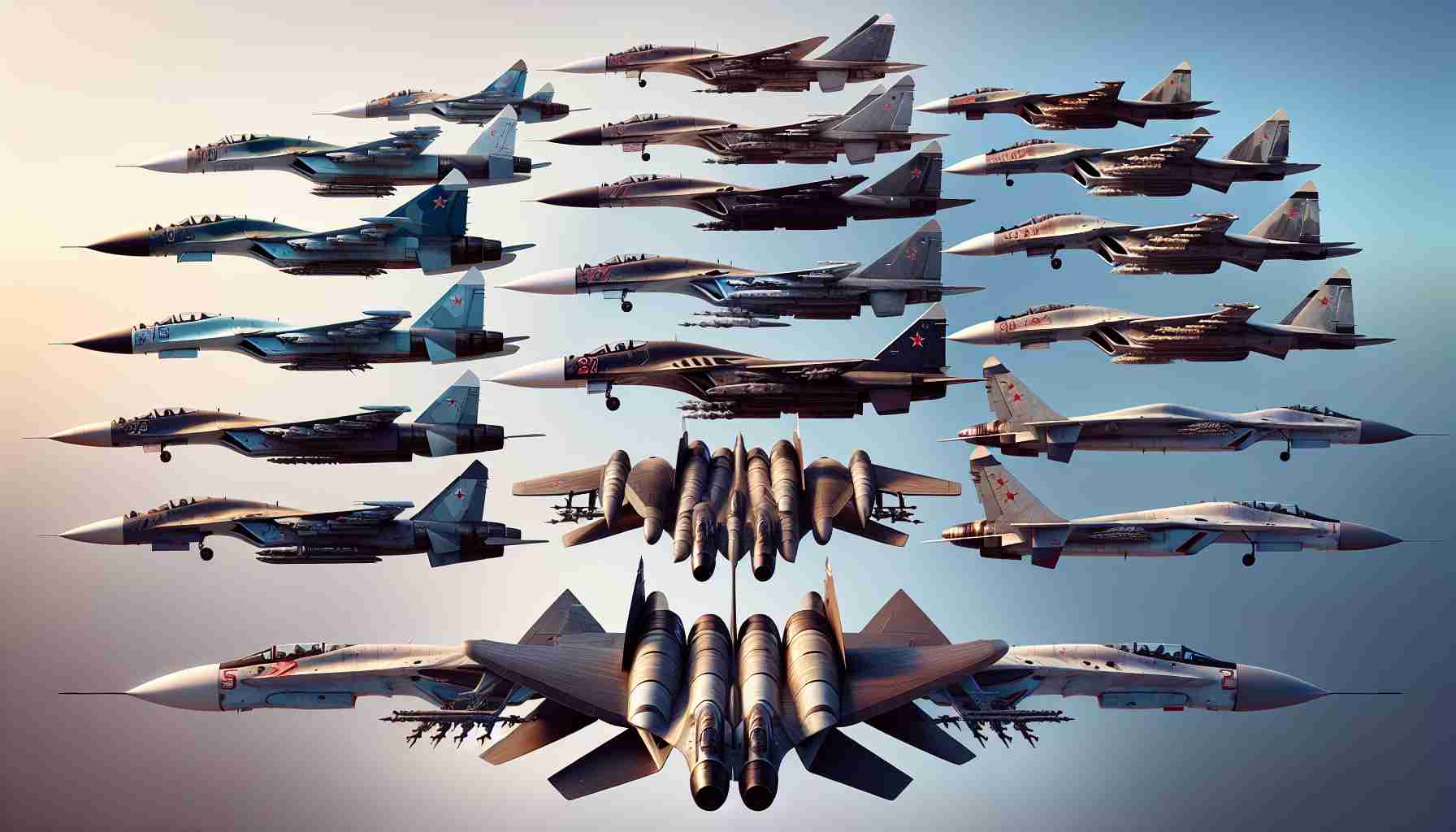The evolution of Russian fighter jets, particularly the Su (Sukhoi) series, has been a journey marked by technological advancements, strategic shifts, and international influences. Originating from the Soviet era, these aircraft have undergone significant transformations to adapt to modern warfare requirements. This article explores the development of the Su series, highlighting its importance in the context of military aerospace.
The Sukhoi Design Bureau was established in 1939, and its first significant contribution to fighter jet technology came during World War II with the Su-2 light bomber. However, the true evolution began in the Cold War, leading to the introduction of iconic aircraft such as the Su-15 and the Su-27. The Su-27, introduced in the late 1970s, became one of the most successful fighter designs in history. It was praised for its agility, range, and advanced avionics, making it a formidable opponent in aerial combat. The Su-27 laid the groundwork for many derivatives, including the Su-30 and Su-35, showcasing multirole capabilities that allowed these aircraft to perform air-to-air and air-to-ground missions effectively.
In the 1990s, the Sukhoi design philosophy evolved further with the development of the Su-30. This aircraft introduced advanced avionics and weapon systems, which were essential for engaging in modern combat scenarios. The Su-30 was unique in its ability to perform both the roles of a fighter and a bomber, catering to varied mission profiles. The incorporation of thrust-vectoring engines in later models like the Su-35 has significantly enhanced maneuverability, setting new standards in air combat performance.
With the advent of stealth technology and net-centric warfare in the 21st century, Sukhoi has faced new challenges. In response, the latest addition to the Su series, the Su-57, aims to integrate fifth-generation features. This includes a low radar cross-section, advanced sensors, and supercruise capabilities. The Su-57 is a multi-role stealth fighter designed to take on various threats, providing the Russian Air Force with an edge in potential aerial engagements.
Additionally, the Sukhoi jets are not just limited to Russian use; their success has prompted export contracts to numerous countries. Nations such as India, China, and Vietnam have adopted various models, demonstrating the global influence and recognition of the Su series. The international interest in these aircraft underscores their effectiveness and reliability in diverse combat situations.
Moreover, the evolution of the Sukhoi fighter jets reflects broader trends in military aviation, including the integration of artificial intelligence and advanced materials. As military strategies evolve, so do the designs and capabilities of these aircraft, positioning them to meet future threats effectively.
In conclusion, the evolution of Russian fighter jets, particularly the Sukhoi series, is a testament to the innovative spirit of Soviet and Russian aerospace engineering. From the early models of the Su-2 to the cutting-edge Su-57, these fighter jets have continually adapted to the changing needs of aerial warfare, providing significant contributions to air superiority. The ongoing developments suggest that the Su series will remain a critical component of Russia’s military capabilities for years to come.
Essential Tips and Insights on the Evolution of Russian Fighter Jets
Understanding the evolution of Russian fighter jets, particularly the Sukhoi series, provides a fascinating glimpse into military aviation advancements. Here are some tips, life hacks, and interesting facts to enhance your knowledge about these remarkable aircraft.
1. Learn the Basics of Fighter Jet Technology
Before delving deep into the specific models like the Su-27 or Su-57, familiarize yourself with basic fighter jet technologies. Key aspects include thrust vectoring, avionics systems, and stealth technologies. Grasping these concepts allows you to appreciate the innovations embodied in the Sukhoi jets.
2. Follow Military Aviation News Sources
Stay updated with the latest developments in military aviation by following reputable military news sites and forums. Sources such as defense.gov provide insights into new technologies, defense strategies, and international military purchases, including information on Russian and Su aircraft.
3. Explore The International Impact
Recognize that the influence of Sukhoi fighter jets extends beyond Russian borders. Countries like India and Vietnam have adopted these jets, showcasing their effectiveness in different operational contexts. Understanding their roles in foreign militaries can provide a broader perspective on their capabilities.
4. Appreciate the Design Philosophy
The Sukhoi Design Bureau has a distinctive design philosophy that embraces versatility and adaptability. Observing how each aircraft variant caters to specific mission profiles can enhance your appreciation of these machines’ engineering.
5. Consider Historical Contexts
Trace the historical evolution from the Su-2 during World War II to contemporary models. The geopolitical contexts in which these aircraft were developed reveal much about their technological advancements and design requirements.
6. Engage with Enthusiast Communities
Joining aviation enthusiast forums or local clubs can deepen your understanding of military aircraft. Discussions often lead to insights about lesser-known features and historical anecdotes about different Sukhoi models.
7. Watch Documentaries and Films
Seeing these aircraft in action through documentaries or films can significantly enhance your understanding. Look for materials that cover both the technological aspects and combat roles of the Sukhoi series.
8. Innovating Future Design
As military aviation evolves, follow the implications of artificial intelligence and advanced materials on future fighter designs. These innovations could drastically change how aircraft are built and operated.
9. Understand the Mechanics of Combat
A study of aerial combat strategies reveals how aircraft like the Su-35 leverage their agility and advanced weaponry. This understanding can enhance your appreciation for tactics used in air superiority missions.
10. Keep an Eye on International Agreements
Military alliances and arms treaties can significantly impact the production and availability of aircraft. Staying informed about global defense agreements can provide insights into how the Sukhoi series might evolve in response to changing international dynamics.
As you explore the fascinating world of Russian fighter jets, particularly the Sukhoi series, you gain valuable insights into the complex interplay of technology, strategy, and history that shapes modern military aviation. For more in-depth information on military aerospace developments, you can visit globalsecurity.org, a resource offering extensive coverage of military technologies and strategies.
By applying these tips, you’ll not only enhance your knowledge of the Sukhoi fighter jets but also develop a more informed understanding of their significance in global military aviation.





















